Open Access


Journal of Medicinal Chemistry, volume 45, issue 8, pages 1712-1722
A Common Mechanism Underlying Promiscuous Inhibitors from Virtual and High-Throughput Screening
1
Department of Molecular Pharmacology and Biological Chemistry, Northwestern University, 303 East Chicago Avenue, Chicago, Illinois 60611, and Howard Hughes Medical Institute, W. M. Keck Institute for Cellular Visualization, Rosenstiel Basic Medical Research Center, Brandeis University, 415 South Street, Waltham, Massachusetts 02454
|
Publication type: Journal Article
Publication date: 2002-03-09
Journal:
Journal of Medicinal Chemistry
Quartile SCImago
Q1
Quartile WOS
Q1
Impact factor: 7.3
ISSN: 00222623, 15204804
Drug Discovery
Molecular Medicine
Abstract
High-throughput and virtual screening are widely used to discover novel leads for drug design. On examination, many screening hits appear non-drug-like: they act noncompetitively, show little relationship between structure and activity, and have poor selectivity. Attempts to develop these peculiar molecules into viable leads are often futile, and much time can be wasted on the characterization of these "phony" hits. Despite their common occurrence, the mechanism of action of these promiscuous molecules remains unknown. To investigate this problem, 45 diverse screening hits were studied. Fifteen of these were previously reported as inhibitors of various receptors, including beta-lactamase, malarial protease, dihydrofolate reductase, HIV Tar RNA, thymidylate synthase, kinesin, insulin receptor, tyrosine kinases, farnesyltransferase, gyrase, prions, triosephosphate isomerase, nitric oxide synthase, phosphoinositide 3-kinase, and integrase; 30 were from an in-house screening library of a major pharmaceutical company. In addition to their original targets, 35 of these 45 compounds were shown to inhibit several unrelated model enzymes. These 35 screening hits included compounds, such as fullerenes, dyes, and quercetin, that have repeatedly shown activity against diverse targets. When tested against the model enzymes, the compounds showed time-dependent but reversible inhibition that was dramatically attenuated by albumin, guanidinium, or urea. Surprisingly, increasing the concentration of the model enzymes 10-fold largely eliminated inhibition, despite a 1000-fold excess of inhibitor; a well-behaved competitive inhibitor did not show this behavior. One model to explain these observations was that the active form of the promiscuous inhibitors was an aggregate of many individual molecules. To test this hypothesis, light scattering and electron microscopy experiments were performed. The nonspecific inhibitors were observed to form particles of 30-400 nm diameter by both techniques. In control experiments, a well-behaved competitive inhibitor and an inactive dye-like molecule were not observed to form aggregates. Consistent with the hypothesis that the aggregates are the inhibitory species, the particle size and IC(50) values of the promiscuous inhibitors varied monotonically with ionic strength; a competitive inhibitor was unaffected by changes in ionic strength. Unexpectedly, aggregate formation appears to explain the activity of many nonspecific inhibitors and may account for the activity of many promiscuous screening hits. Molecules acting via this mechanism may be widespread in drug discovery screening databases. Recognition of these compounds may improve screening results in many areas of pharmaceutical interest.
Citations by journals
|
10
20
30
40
50
60
70
80
90
|
|
|
Journal of Medicinal Chemistry

|

Journal of Medicinal Chemistry
88 publications, 9.87%
|
|
ChemMedChem

|

ChemMedChem
29 publications, 3.25%
|
|
SLAS Discovery

|

SLAS Discovery
28 publications, 3.14%
|
|
Bioorganic and Medicinal Chemistry

|

Bioorganic and Medicinal Chemistry
27 publications, 3.03%
|
|
Journal of Chemical Information and Modeling

|

Journal of Chemical Information and Modeling
27 publications, 3.03%
|
|
Bioorganic and Medicinal Chemistry Letters

|

Bioorganic and Medicinal Chemistry Letters
23 publications, 2.58%
|
|
Journal of the American Chemical Society

|

Journal of the American Chemical Society
16 publications, 1.79%
|
|
Biochemistry

|

Biochemistry
16 publications, 1.79%
|
|
Drug Discovery Today

|

Drug Discovery Today
15 publications, 1.68%
|
|
ACS Chemical Biology

|

ACS Chemical Biology
15 publications, 1.68%
|
|
PLoS ONE
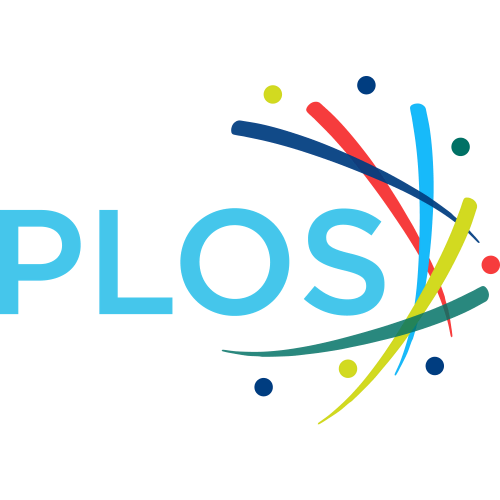
|

PLoS ONE
14 publications, 1.57%
|
|
European Journal of Medicinal Chemistry

|

European Journal of Medicinal Chemistry
14 publications, 1.57%
|
|
Antimicrobial Agents and Chemotherapy

|

Antimicrobial Agents and Chemotherapy
10 publications, 1.12%
|
|
Proceedings of the National Academy of Sciences of the United States of America
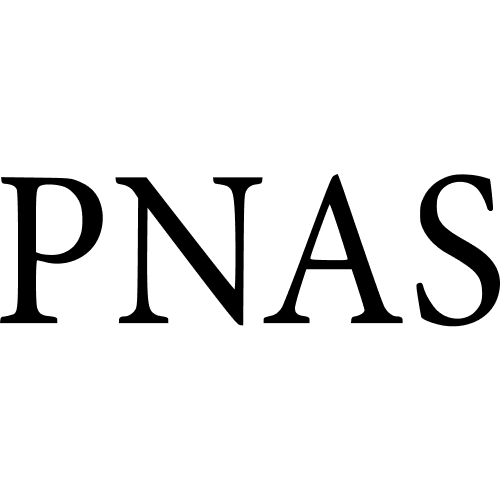
|

Proceedings of the National Academy of Sciences of the United States of America
10 publications, 1.12%
|
|
Journal of Biological Chemistry
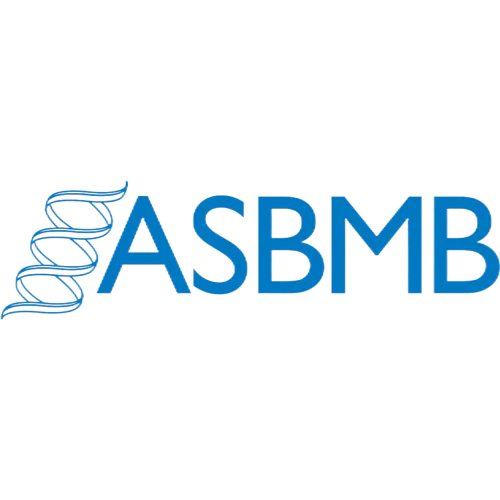
|

Journal of Biological Chemistry
9 publications, 1.01%
|
|
Nature Reviews Drug Discovery

|

Nature Reviews Drug Discovery
9 publications, 1.01%
|
|
ACS Infectious Diseases

|

ACS Infectious Diseases
9 publications, 1.01%
|
|
Analytical Biochemistry

|

Analytical Biochemistry
8 publications, 0.9%
|
|
Methods in Molecular Biology

|

Methods in Molecular Biology
8 publications, 0.9%
|
|
Lipophilicity in Drug Action and Toxicology

|

Lipophilicity in Drug Action and Toxicology
8 publications, 0.9%
|
|
Current Opinion in Chemical Biology

|

Current Opinion in Chemical Biology
7 publications, 0.78%
|
|
Future Medicinal Chemistry

|

Future Medicinal Chemistry
7 publications, 0.78%
|
|
International Journal of Molecular Sciences

|

International Journal of Molecular Sciences
7 publications, 0.78%
|
|
Journal of Computer-Aided Molecular Design

|

Journal of Computer-Aided Molecular Design
7 publications, 0.78%
|
|
Nature Chemical Biology

|

Nature Chemical Biology
7 publications, 0.78%
|
|
Angewandte Chemie

|

Angewandte Chemie
7 publications, 0.78%
|
|
ACS Medicinal Chemistry Letters

|

ACS Medicinal Chemistry Letters
7 publications, 0.78%
|
|
Expert Opinion on Drug Discovery

|

Expert Opinion on Drug Discovery
7 publications, 0.78%
|
|
Journal of Molecular Biology

|

Journal of Molecular Biology
6 publications, 0.67%
|
|
10
20
30
40
50
60
70
80
90
|
Citations by publishers
|
50
100
150
200
250
|
|
|
American Chemical Society (ACS)

|

American Chemical Society (ACS)
230 publications, 25.78%
|
|
Elsevier

|

Elsevier
183 publications, 20.52%
|
|
Wiley

|

Wiley
95 publications, 10.65%
|
|
Springer Nature

|

Springer Nature
80 publications, 8.97%
|
|
SAGE

|

SAGE
31 publications, 3.48%
|
|
Royal Society of Chemistry (RSC)

|

Royal Society of Chemistry (RSC)
28 publications, 3.14%
|
|
Multidisciplinary Digital Publishing Institute (MDPI)

|

Multidisciplinary Digital Publishing Institute (MDPI)
23 publications, 2.58%
|
|
Public Library of Science (PLoS)

|

Public Library of Science (PLoS)
14 publications, 1.57%
|
|
American Society for Microbiology

|

American Society for Microbiology
13 publications, 1.46%
|
|
Future Medicine

|

Future Medicine
10 publications, 1.12%
|
|
Taylor & Francis

|

Taylor & Francis
10 publications, 1.12%
|
|
Proceedings of the National Academy of Sciences (PNAS)

|

Proceedings of the National Academy of Sciences (PNAS)
10 publications, 1.12%
|
|
American Society for Biochemistry and Molecular Biology

|

American Society for Biochemistry and Molecular Biology
9 publications, 1.01%
|
|
F1000 Research
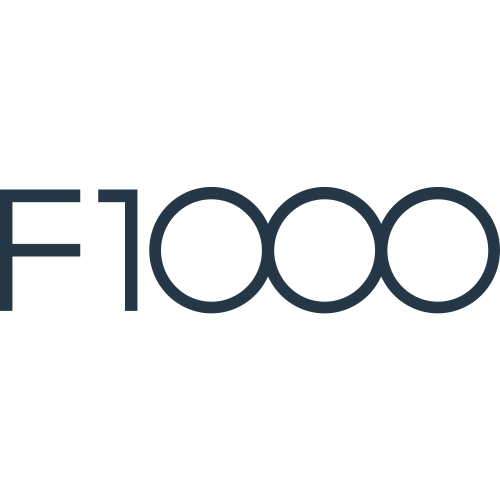
|

F1000 Research
6 publications, 0.67%
|
|
Mary Ann Liebert
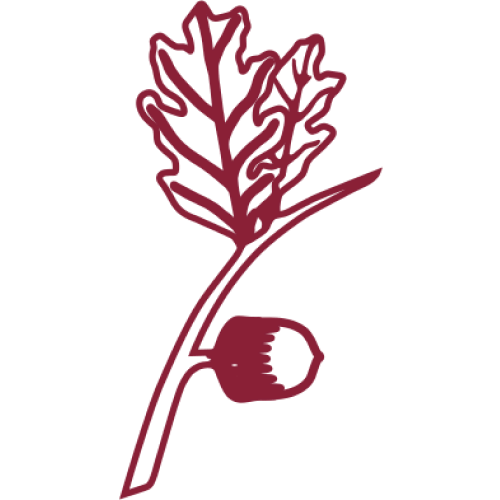
|

Mary Ann Liebert
5 publications, 0.56%
|
|
Portland Press
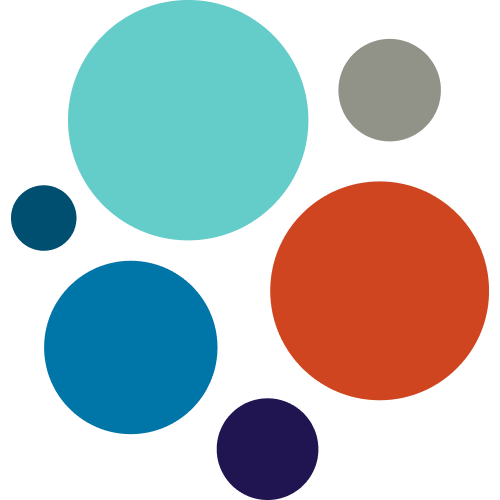
|

Portland Press
5 publications, 0.56%
|
|
Bentham Science

|

Bentham Science
4 publications, 0.45%
|
|
Oxford University Press

|

Oxford University Press
4 publications, 0.45%
|
|
American Society for Pharmacology and Experimental Therapeutics
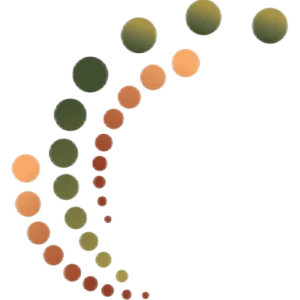
|

American Society for Pharmacology and Experimental Therapeutics
3 publications, 0.34%
|
|
International Union of Crystallography (IUCr)
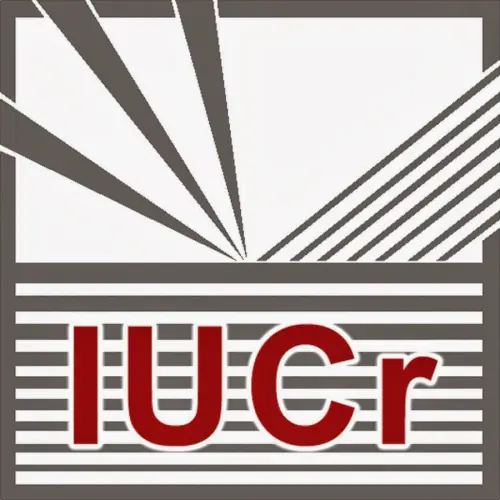
|

International Union of Crystallography (IUCr)
3 publications, 0.34%
|
|
Frontiers Media S.A.

|

Frontiers Media S.A.
3 publications, 0.34%
|
|
|
, 3, 0.34%
3 publications, 0.34%
|
|
CSIRO Publishing
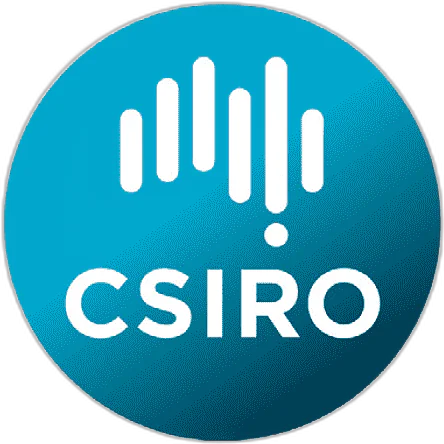
|

CSIRO Publishing
2 publications, 0.22%
|
|
Environmental Health Perspectives

|

Environmental Health Perspectives
2 publications, 0.22%
|
|
Pharmaceutical Society of Japan

|

Pharmaceutical Society of Japan
2 publications, 0.22%
|
|
American Association for Cancer Research (AACR)
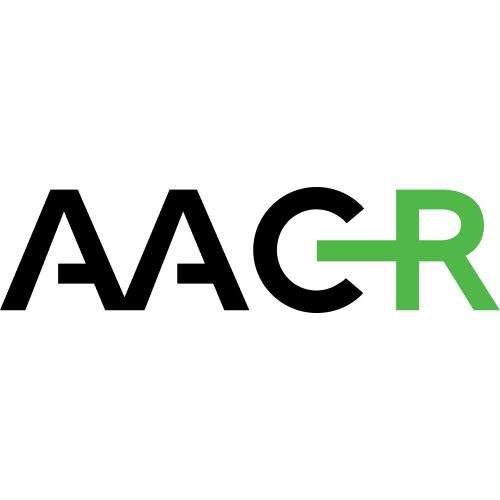
|

American Association for Cancer Research (AACR)
2 publications, 0.22%
|
|
Thieme

|

Thieme
2 publications, 0.22%
|
|
Beilstein-Institut

|

Beilstein-Institut
1 publication, 0.11%
|
|
American Physical Society (APS)

|

American Physical Society (APS)
1 publication, 0.11%
|
|
50
100
150
200
250
|
- We do not take into account publications that without a DOI.
- Statistics recalculated only for publications connected to researchers, organizations and labs registered on the platform.
- Statistics recalculated weekly.
{"yearsCitations":{"type":"bar","data":{"show":true,"labels":[2002,2003,2004,2005,2006,2007,2008,2009,2010,2011,2012,2013,2014,2015,2016,2017,2018,2019,2020,2021,2022,2023,2024],"ids":[0,0,0,0,0,0,0,0,0,0,0,0,0,0,0,0,0,0,0,0,0,0,0],"codes":[0,0,0,0,0,0,0,0,0,0,0,0,0,0,0,0,0,0,0,0,0,0,0],"imageUrls":["","","","","","","","","","","","","","","","","","","","","","",""],"datasets":[{"label":"Citations number","data":[15,28,46,33,46,57,32,46,34,40,51,46,41,42,37,58,48,47,45,38,31,22,4],"backgroundColor":["#3B82F6","#3B82F6","#3B82F6","#3B82F6","#3B82F6","#3B82F6","#3B82F6","#3B82F6","#3B82F6","#3B82F6","#3B82F6","#3B82F6","#3B82F6","#3B82F6","#3B82F6","#3B82F6","#3B82F6","#3B82F6","#3B82F6","#3B82F6","#3B82F6","#3B82F6","#3B82F6"],"percentage":["1.68","3.14","5.16","3.7","5.16","6.39","3.59","5.16","3.81","4.48","5.72","5.16","4.6","4.71","4.15","6.5","5.38","5.27","5.04","4.26","3.48","2.47","0.45"],"barThickness":null}]},"options":{"indexAxis":"x","maintainAspectRatio":true,"scales":{"y":{"ticks":{"precision":0,"autoSkip":false,"font":{"family":"Montserrat"},"color":"#000000"}},"x":{"ticks":{"stepSize":1,"precision":0,"font":{"family":"Montserrat"},"color":"#000000"}}},"plugins":{"legend":{"position":"top","labels":{"font":{"family":"Montserrat"},"color":"#000000"}},"title":{"display":true,"text":"Citations per year","font":{"size":24,"family":"Montserrat","weight":600},"color":"#000000"}}}},"journals":{"type":"bar","data":{"show":true,"labels":["Journal of Medicinal Chemistry","ChemMedChem","SLAS Discovery","Bioorganic and Medicinal Chemistry","Journal of Chemical Information and Modeling","Bioorganic and Medicinal Chemistry Letters","Journal of the American Chemical Society","Biochemistry","Drug Discovery Today","ACS Chemical Biology","PLoS ONE","European Journal of Medicinal Chemistry","Antimicrobial Agents and Chemotherapy","Proceedings of the National Academy of Sciences of the United States of America","Journal of Biological Chemistry","Nature Reviews Drug Discovery","ACS Infectious Diseases","Analytical Biochemistry","Methods in Molecular Biology","Lipophilicity in Drug Action and Toxicology","Current Opinion in Chemical Biology","Future Medicinal Chemistry","International Journal of Molecular Sciences","Journal of Computer-Aided Molecular Design","Nature Chemical Biology","Angewandte Chemie","ACS Medicinal Chemistry Letters","Expert Opinion on Drug Discovery","Journal of Molecular Biology"],"ids":[3673,1430,25009,1162,13608,8828,4813,9964,23042,2045,24963,8171,17567,306,19451,14344,7781,22528,3516,42268,5052,22201,14627,2404,17718,25450,360,7740,19701],"codes":[0,0,0,0,0,0,0,0,0,0,0,0,0,0,0,0,0,0,0,0,0,0,0,0,0,0,0,0,0],"imageUrls":["\/storage\/images\/resized\/iLiQsFqFaSEx6chlGQ5fbAwF6VYU3WWa08hkss0g_medium.webp","\/storage\/images\/resized\/bRyGpdm98BkAUYiK1YFNpl5Z7hPu6Gd87gbIeuG3_medium.webp","\/storage\/images\/resized\/ruydfaB80LDjlkYqsfOeUAZohOIODyq7bQzis5O7_medium.webp","\/storage\/images\/resized\/GDnYOu1UpMMfMMRV6Aqle4H0YLLsraeD9IP9qScG_medium.webp","\/storage\/images\/resized\/iLiQsFqFaSEx6chlGQ5fbAwF6VYU3WWa08hkss0g_medium.webp","\/storage\/images\/resized\/GDnYOu1UpMMfMMRV6Aqle4H0YLLsraeD9IP9qScG_medium.webp","\/storage\/images\/resized\/iLiQsFqFaSEx6chlGQ5fbAwF6VYU3WWa08hkss0g_medium.webp","\/storage\/images\/resized\/iLiQsFqFaSEx6chlGQ5fbAwF6VYU3WWa08hkss0g_medium.webp","\/storage\/images\/resized\/GDnYOu1UpMMfMMRV6Aqle4H0YLLsraeD9IP9qScG_medium.webp","\/storage\/images\/resized\/iLiQsFqFaSEx6chlGQ5fbAwF6VYU3WWa08hkss0g_medium.webp","\/storage\/images\/resized\/PRGhlgB4OKRltSNtT39eA6wlnOTGRap1QQ6FQHih_medium.webp","\/storage\/images\/resized\/GDnYOu1UpMMfMMRV6Aqle4H0YLLsraeD9IP9qScG_medium.webp","\/storage\/images\/resized\/VPE7q24PXoHr5SS2SqfEgxccSMUxWLfZINOX60uo_medium.webp","\/storage\/images\/resized\/mxFdPe9qujsfvfYfcN0QOclAiYORFb0xrRlwV8gs_medium.webp","\/storage\/images\/resized\/OuA6WPZekwEiUM99mP2pSqj4yHPxHezM6xgLhAjO_medium.webp","\/storage\/images\/resized\/voXLqlsvTwv5p3iMQ8Dhs95nqB4AXOG7Taj7G4ra_medium.webp","\/storage\/images\/resized\/iLiQsFqFaSEx6chlGQ5fbAwF6VYU3WWa08hkss0g_medium.webp","\/storage\/images\/resized\/GDnYOu1UpMMfMMRV6Aqle4H0YLLsraeD9IP9qScG_medium.webp","\/storage\/images\/resized\/voXLqlsvTwv5p3iMQ8Dhs95nqB4AXOG7Taj7G4ra_medium.webp","\/storage\/images\/resized\/bRyGpdm98BkAUYiK1YFNpl5Z7hPu6Gd87gbIeuG3_medium.webp","\/storage\/images\/resized\/GDnYOu1UpMMfMMRV6Aqle4H0YLLsraeD9IP9qScG_medium.webp","\/storage\/images\/resized\/AN2jnDN59NmKaS4CWLHAGstADL2DbnatQScsFA6C_medium.webp","\/storage\/images\/resized\/MjH1ITP7lMYGxeqUZfkt2BnVLgjkk413jwBV97XX_medium.webp","\/storage\/images\/resized\/voXLqlsvTwv5p3iMQ8Dhs95nqB4AXOG7Taj7G4ra_medium.webp","\/storage\/images\/resized\/voXLqlsvTwv5p3iMQ8Dhs95nqB4AXOG7Taj7G4ra_medium.webp","\/storage\/images\/resized\/bRyGpdm98BkAUYiK1YFNpl5Z7hPu6Gd87gbIeuG3_medium.webp","\/storage\/images\/resized\/iLiQsFqFaSEx6chlGQ5fbAwF6VYU3WWa08hkss0g_medium.webp","\/storage\/images\/resized\/5YZtvLvkPZuc2JHOaZsjCvGSHFCuC3drUwN3YAc5_medium.webp","\/storage\/images\/resized\/GDnYOu1UpMMfMMRV6Aqle4H0YLLsraeD9IP9qScG_medium.webp"],"datasets":[{"label":"","data":[88,29,28,27,27,23,16,16,15,15,14,14,10,10,9,9,9,8,8,8,7,7,7,7,7,7,7,7,6],"backgroundColor":["#3B82F6","#3B82F6","#3B82F6","#3B82F6","#3B82F6","#3B82F6","#3B82F6","#3B82F6","#3B82F6","#3B82F6","#3B82F6","#3B82F6","#3B82F6","#3B82F6","#3B82F6","#3B82F6","#3B82F6","#3B82F6","#3B82F6","#3B82F6","#3B82F6","#3B82F6","#3B82F6","#3B82F6","#3B82F6","#3B82F6","#3B82F6","#3B82F6","#3B82F6"],"percentage":[9.87,3.25,3.14,3.03,3.03,2.58,1.79,1.79,1.68,1.68,1.57,1.57,1.12,1.12,1.01,1.01,1.01,0.9,0.9,0.9,0.78,0.78,0.78,0.78,0.78,0.78,0.78,0.78,0.67],"barThickness":13}]},"options":{"indexAxis":"y","maintainAspectRatio":false,"scales":{"y":{"ticks":{"precision":0,"autoSkip":false,"font":{"family":"Montserrat"},"color":"#000000"}},"x":{"ticks":{"stepSize":null,"precision":0,"font":{"family":"Montserrat"},"color":"#000000"}}},"plugins":{"legend":{"position":"top","labels":{"font":{"family":"Montserrat"},"color":"#000000"}},"title":{"display":true,"text":"Journals","font":{"size":24,"family":"Montserrat","weight":600},"color":"#000000"}}}},"publishers":{"type":"bar","data":{"show":true,"labels":["American Chemical Society (ACS)","Elsevier","Wiley","Springer Nature","SAGE","Royal Society of Chemistry (RSC)","Multidisciplinary Digital Publishing Institute (MDPI)","Public Library of Science (PLoS)","American Society for Microbiology","Future Medicine","Taylor & Francis","Proceedings of the National Academy of Sciences (PNAS)","American Society for Biochemistry and Molecular Biology","F1000 Research","Mary Ann Liebert","Portland Press","Bentham Science","Oxford University Press","American Society for Pharmacology and Experimental Therapeutics","International Union of Crystallography (IUCr)","Frontiers Media S.A.","","CSIRO Publishing","Environmental Health Perspectives","Pharmaceutical Society of Japan","American Association for Cancer Research (AACR)","Thieme","Beilstein-Institut","American Physical Society (APS)"],"ids":[40,17,11,8,31,123,202,344,142,6949,18,162,2090,7910,230,801,39,19,695,730,208,6887,7016,8360,159,2286,135,6139,1539],"codes":[0,0,0,0,0,0,0,0,0,0,0,0,0,0,0,0,0,0,0,0,0,0,0,0,0,0,0,0,0],"imageUrls":["\/storage\/images\/resized\/iLiQsFqFaSEx6chlGQ5fbAwF6VYU3WWa08hkss0g_medium.webp","\/storage\/images\/resized\/GDnYOu1UpMMfMMRV6Aqle4H0YLLsraeD9IP9qScG_medium.webp","\/storage\/images\/resized\/bRyGpdm98BkAUYiK1YFNpl5Z7hPu6Gd87gbIeuG3_medium.webp","\/storage\/images\/resized\/voXLqlsvTwv5p3iMQ8Dhs95nqB4AXOG7Taj7G4ra_medium.webp","\/storage\/images\/resized\/ruydfaB80LDjlkYqsfOeUAZohOIODyq7bQzis5O7_medium.webp","\/storage\/images\/resized\/leiAYcRDGTSl5B1eCnwpSGqmDEUEfDPPoYisFGhT_medium.webp","\/storage\/images\/resized\/MjH1ITP7lMYGxeqUZfkt2BnVLgjkk413jwBV97XX_medium.webp","\/storage\/images\/resized\/PRGhlgB4OKRltSNtT39eA6wlnOTGRap1QQ6FQHih_medium.webp","\/storage\/images\/resized\/VPE7q24PXoHr5SS2SqfEgxccSMUxWLfZINOX60uo_medium.webp","\/storage\/images\/resized\/AN2jnDN59NmKaS4CWLHAGstADL2DbnatQScsFA6C_medium.webp","\/storage\/images\/resized\/5YZtvLvkPZuc2JHOaZsjCvGSHFCuC3drUwN3YAc5_medium.webp","\/storage\/images\/resized\/mxFdPe9qujsfvfYfcN0QOclAiYORFb0xrRlwV8gs_medium.webp","\/storage\/images\/resized\/OuA6WPZekwEiUM99mP2pSqj4yHPxHezM6xgLhAjO_medium.webp","\/storage\/images\/resized\/WEXVM2IukNfkmwoqmPhtMKmAeERljKWAbbXmEX7m_medium.webp","\/storage\/images\/resized\/Zy5YST233rzRbZP24I24MzZm64hz20ZV9qQopmMn_medium.webp","\/storage\/images\/resized\/nUqNrP9GnM1t0BrAIXp1LBodjU8aIJ2Fk4pLfGhZ_medium.webp","\/storage\/images\/resized\/doUaFUZdxUEQjLi1TwZjGHi8HXYNWWSk04dSC6Xh_medium.webp","\/storage\/images\/resized\/yNSijlgQghQF53VZuyFLA30CKDe4j3HK74Vtpnxa_medium.webp","\/storage\/images\/resized\/s6JtNKPXrzklKtbQZ4HrtzuJT0P7eHPX9U8x0nss_medium.webp","\/storage\/images\/resized\/xG3oC19920mmFVqkoVEGKGaMCeoalzyvWxPkVox5_medium.webp","\/storage\/images\/resized\/4QWA67eqfcfyOiA8Wk7YnqroHFqQbTsmDJUYTCTg_medium.webp","","\/storage\/images\/resized\/se1SPF1aqPN9oZ2Pvhp519I0unlLQM7LOKSeYPe8_medium.webp","\/storage\/images\/resized\/MIivvlLQFo5u9kfae4dJj89yPKKtYFbBg0R4AoGE_medium.webp","\/storage\/images\/resized\/KBGMujzjwr0rGFxg8Kz0qvYdFHkcBo5w0GTtfiiU_medium.webp","\/storage\/images\/resized\/cfuVw6XIq2mATDNJdXiose3W8qYbkmaVSpHoP8XL_medium.webp","\/storage\/images\/resized\/xqixcltwJYe6H8Uco2JbAFfIOzt7UNKH0OcPOPzO_medium.webp","\/storage\/images\/resized\/ex6KJoZujZOZFZh7jGfeHauiftuB3CI7iwJVFRDg_medium.webp","\/storage\/images\/resized\/nrK64iXHTzj43wMrfN1ZoUQ0vanswGzWPN45K3jA_medium.webp"],"datasets":[{"label":"","data":[230,183,95,80,31,28,23,14,13,10,10,10,9,6,5,5,4,4,3,3,3,3,2,2,2,2,2,1,1],"backgroundColor":["#3B82F6","#3B82F6","#3B82F6","#3B82F6","#3B82F6","#3B82F6","#3B82F6","#3B82F6","#3B82F6","#3B82F6","#3B82F6","#3B82F6","#3B82F6","#3B82F6","#3B82F6","#3B82F6","#3B82F6","#3B82F6","#3B82F6","#3B82F6","#3B82F6","#3B82F6","#3B82F6","#3B82F6","#3B82F6","#3B82F6","#3B82F6","#3B82F6","#3B82F6"],"percentage":[25.78,20.52,10.65,8.97,3.48,3.14,2.58,1.57,1.46,1.12,1.12,1.12,1.01,0.67,0.56,0.56,0.45,0.45,0.34,0.34,0.34,0.34,0.22,0.22,0.22,0.22,0.22,0.11,0.11],"barThickness":13}]},"options":{"indexAxis":"y","maintainAspectRatio":false,"scales":{"y":{"ticks":{"precision":0,"autoSkip":false,"font":{"family":"Montserrat"},"color":"#000000"}},"x":{"ticks":{"stepSize":null,"precision":0,"font":{"family":"Montserrat"},"color":"#000000"}}},"plugins":{"legend":{"position":"top","labels":{"font":{"family":"Montserrat"},"color":"#000000"}},"title":{"display":true,"text":"Publishers","font":{"size":24,"family":"Montserrat","weight":600},"color":"#000000"}}}}}
Metrics
Cite this
GOST |
RIS |
BibTex |
MLA
Cite this
GOST
Copy
McGovern S. L. et al. A Common Mechanism Underlying Promiscuous Inhibitors from Virtual and High-Throughput Screening // Journal of Medicinal Chemistry. 2002. Vol. 45. No. 8. pp. 1712-1722.
GOST all authors (up to 50)
Copy
McGovern S. L., Caselli E., Grigorieff N., Shoichet B. A Common Mechanism Underlying Promiscuous Inhibitors from Virtual and High-Throughput Screening // Journal of Medicinal Chemistry. 2002. Vol. 45. No. 8. pp. 1712-1722.
Cite this
RIS
Copy
TY - JOUR
DO - 10.1021/jm010533y
UR - https://doi.org/10.1021%2Fjm010533y
TI - A Common Mechanism Underlying Promiscuous Inhibitors from Virtual and High-Throughput Screening
T2 - Journal of Medicinal Chemistry
AU - McGovern, Susan L.
AU - Caselli, Emilia
AU - Grigorieff, Nikolaus
AU - Shoichet, Brian
PY - 2002
DA - 2002/03/09 00:00:00
PB - American Chemical Society (ACS)
SP - 1712-1722
IS - 8
VL - 45
SN - 0022-2623
SN - 1520-4804
ER -
Cite this
BibTex
Copy
@article{2002_McGovern,
author = {Susan L. McGovern and Emilia Caselli and Nikolaus Grigorieff and Brian Shoichet},
title = {A Common Mechanism Underlying Promiscuous Inhibitors from Virtual and High-Throughput Screening},
journal = {Journal of Medicinal Chemistry},
year = {2002},
volume = {45},
publisher = {American Chemical Society (ACS)},
month = {mar},
url = {https://doi.org/10.1021%2Fjm010533y},
number = {8},
pages = {1712--1722},
doi = {10.1021/jm010533y}
}
Cite this
MLA
Copy
McGovern, Susan L., et al. “A Common Mechanism Underlying Promiscuous Inhibitors from Virtual and High-Throughput Screening.” Journal of Medicinal Chemistry, vol. 45, no. 8, Mar. 2002, pp. 1712-1722. https://doi.org/10.1021%2Fjm010533y.
